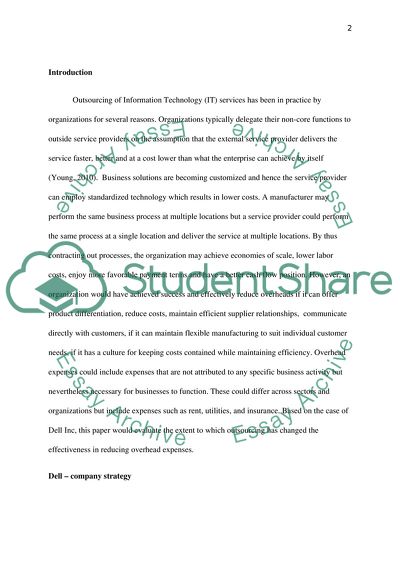Cite this document
(Is outsourcing Information Technology Services an Effective Means of Coursework Example | Topics and Well Written Essays - 1750 words, n.d.)
Is outsourcing Information Technology Services an Effective Means of Coursework Example | Topics and Well Written Essays - 1750 words. https://studentshare.org/information-technology/1774571-is-outsourcing-information-technology-services-an-effective-means-of-reducing-a-companys-overhead-expenses
Is outsourcing Information Technology Services an Effective Means of Coursework Example | Topics and Well Written Essays - 1750 words. https://studentshare.org/information-technology/1774571-is-outsourcing-information-technology-services-an-effective-means-of-reducing-a-companys-overhead-expenses
(Is Outsourcing Information Technology Services an Effective Means of Coursework Example | Topics and Well Written Essays - 1750 Words)
Is Outsourcing Information Technology Services an Effective Means of Coursework Example | Topics and Well Written Essays - 1750 Words. https://studentshare.org/information-technology/1774571-is-outsourcing-information-technology-services-an-effective-means-of-reducing-a-companys-overhead-expenses.
Is Outsourcing Information Technology Services an Effective Means of Coursework Example | Topics and Well Written Essays - 1750 Words. https://studentshare.org/information-technology/1774571-is-outsourcing-information-technology-services-an-effective-means-of-reducing-a-companys-overhead-expenses.
“Is Outsourcing Information Technology Services an Effective Means of Coursework Example | Topics and Well Written Essays - 1750 Words”. https://studentshare.org/information-technology/1774571-is-outsourcing-information-technology-services-an-effective-means-of-reducing-a-companys-overhead-expenses.


